A charming garden with many roses surrounds the beautiful church between Rákóczi Road and Dohány Street. The church will be one of the parish venues for the week of the 52nd International Eucharistic Congress in September 2021, and a Mass will be held in French on 8 September at 5 p.m. The church has been beautified inside and out in recent decades. The renovated 119-year-old unique organ will be inaugurated in August. Its renovation began two years ago.
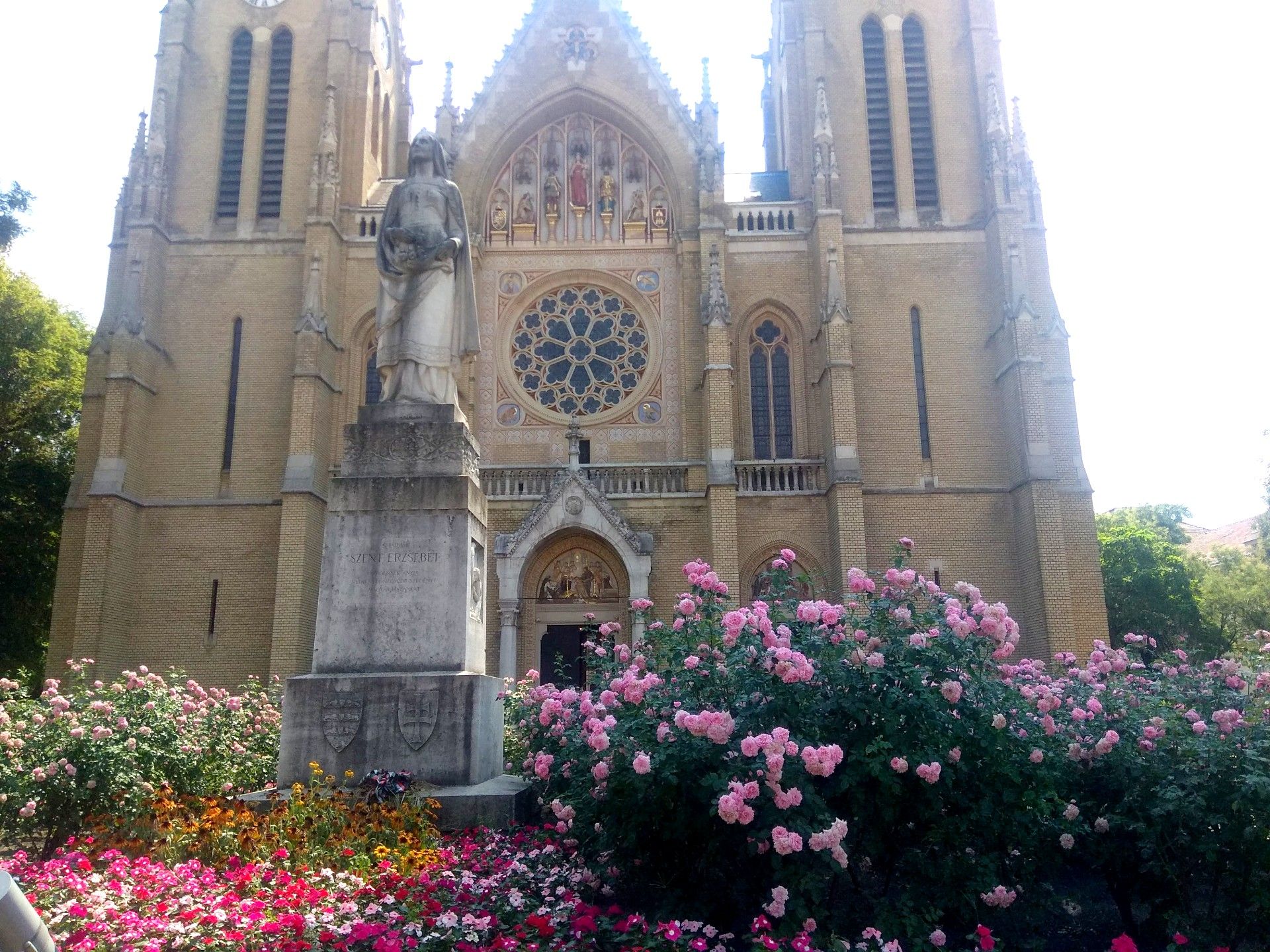
The rose is an attribute of St. Elizabeth of Hungary. Roses can be seen in the garden and in many motifs of the building.
The history of the parish church of St. Elizabeth of Hungary dates back to the 19th century. Budapest was founded in 1873 by merging Buda, Óbuda and Pest. At the time, it consisted of nine districts. It was at this time that the 7th District was created. The district has been called Erzsébetváros since 1882. It was named after Ferenc József's wife, Erzsébet, the Queen Consort of Hungary. The parishes of the 7th and 14th Districts were separated from the parish of Terézváros in 1881. The growth of the district made it necessary to build a church for Catholic believers.
In the northern part of Szegényház Square – which has been called Rózsák Square since 1932 – a Roman Catholic church was built in 1881 according to the plans of Győző Czigler. The four-hundred-seat building soon became cramped, making it necessary to build a new parish church. In 1889, a church-building committee was formed under the leadership of Deputy Mayor Károly Gerlóczy.
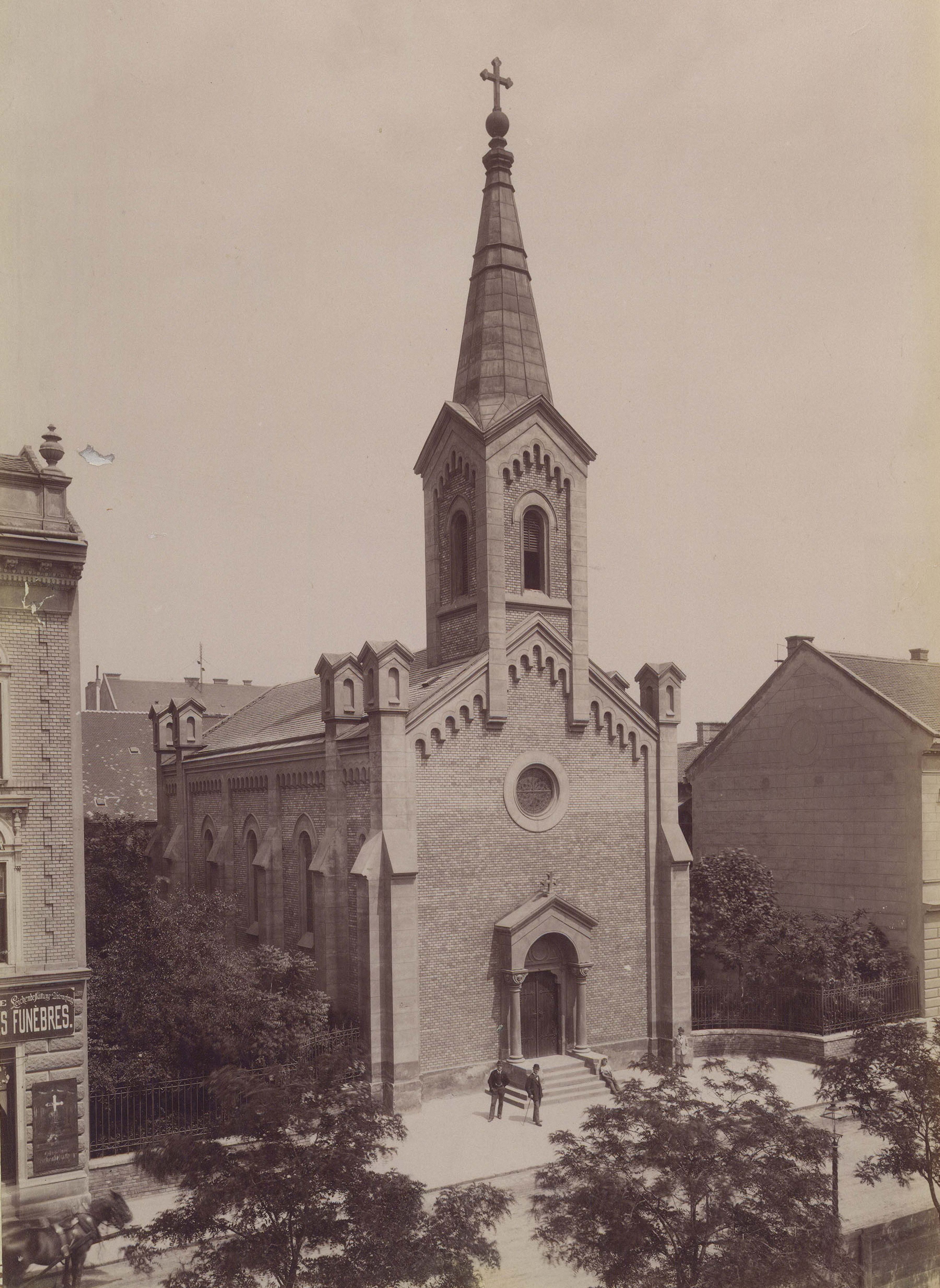
The former Roman Catholic (now Greek Catholic) church in 1894 on Rózsák Square (Source: Fortepan / Budapest Archives). Reference No.: HU.BFL.XV.19.d.1.05.093)
Several tenders were received for the design from renowned architects, including Samu Pecz and Sándor Aigner, and finally, the Budapest General Assembly approved Imre Steindl's plan in 1892. Imre Steindl (1839-1902) was a significant architect of the age, a professor at the Technical University, and is best known as the designer of the Parliament. Saint Elizabeth's Church was the only significant sacral building he designed.
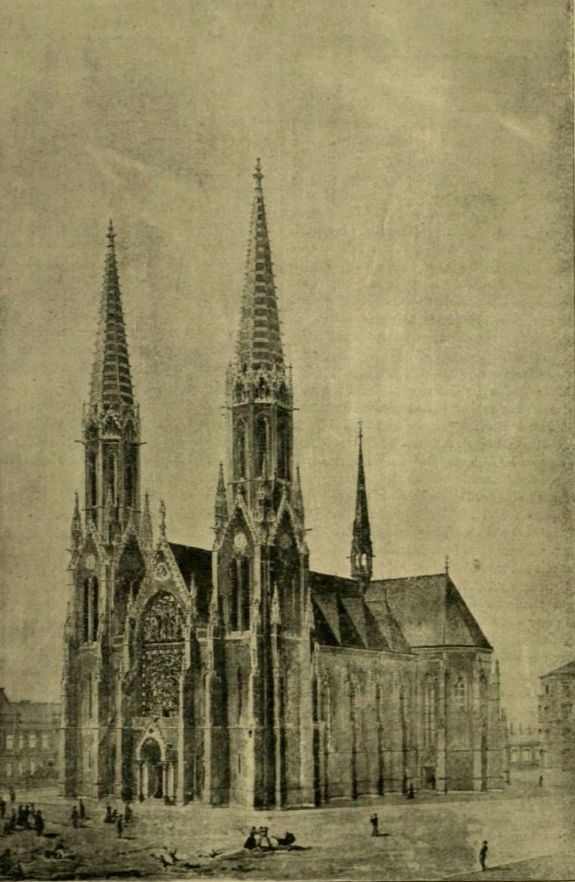
The church was designed by Imre Steindl, a drawing published at the time of the laying of the foundation stone (Source: Vasárnapi Ujság, 27 October 1895)
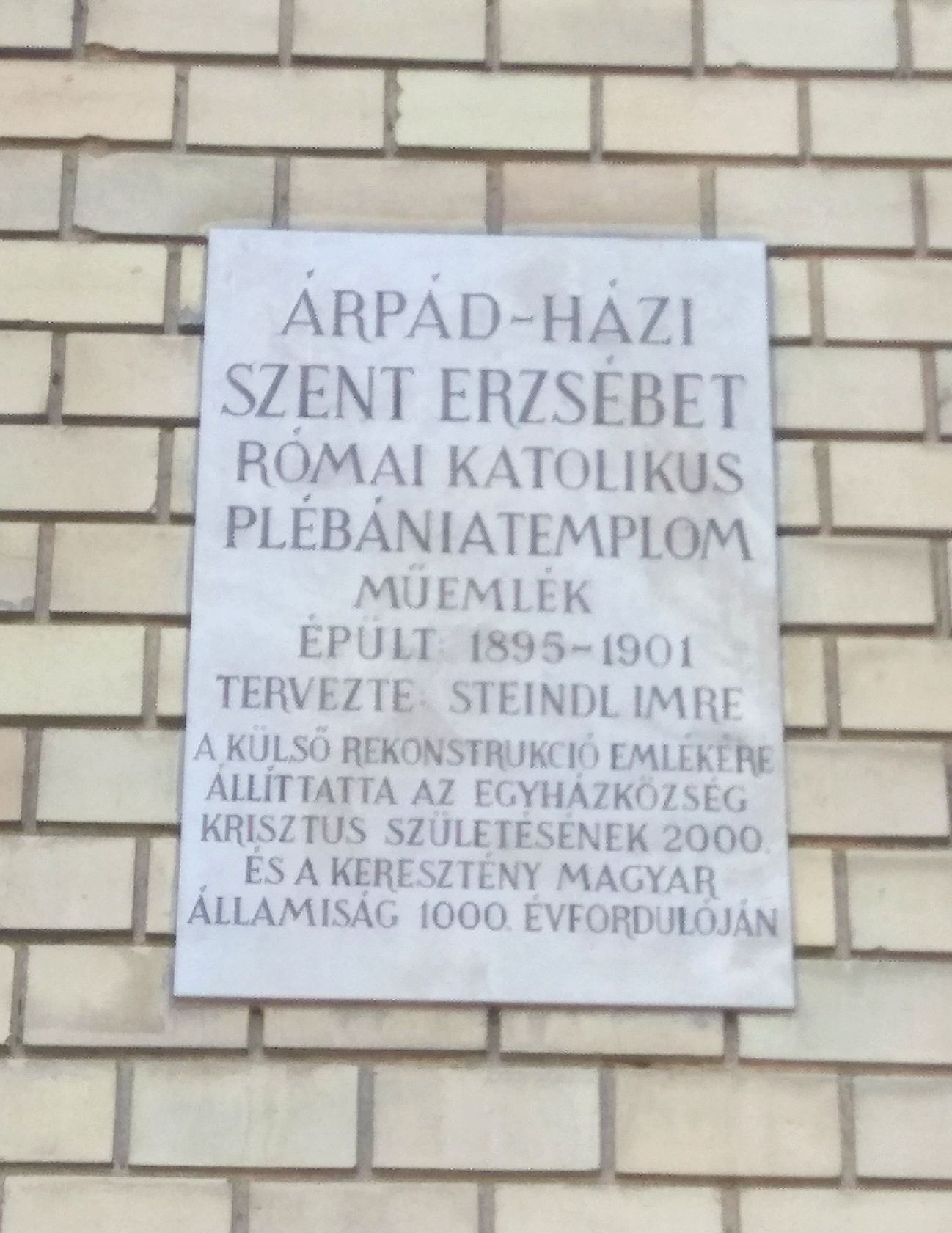
Memorial plaque next to the entrance (Photo: pestbuda.hu)
Construction began in September 1893, the cornerstone of the church being ceremoniously laid by the king, Franz Joseph I, himself on 20 October 1895. This was reported in the 27 October 1895 issue of the Vasárnapi Újság:
“A Catholic audience in the Hungarian capital held a nice ceremony on Sunday, the 20th of this month. The foundation stone of the ornate church now being built in Erzsébetváros was laid by the king himself, surrounded by his Hungarian ministers. (...) The mayor placed a signed document, the daily issue of several newspapers and, in addition, coins in a double box made of glass and copper-tin, specially prepared for this purpose. This box was placed in the cornerstone by the chairman of the committee. The mayor then asked His Majesty to his the foundation stone three times with a hammer as is tradition. It is known that the construction of the church is based on the plans of Imre Steindl, a university professor, the excellent designer of the new parliament and so many other ornate public buildings, construction is being led by the famous architect Ferencz Schömer. (…) The Gothic Church, will be a basilica-style building with a transept and two towers. The two sacristies on either side of the sanctuary will be connected by a ramp running around the sanctuary. (…) Thus, our capital, which for a time was rather poor in artistic churches, is once again enriched by an early French Gothic-style, beautifully designed and artistic church. The restoration of the Matthias Church in Budavár was completed this decade, and the Lipótváros Basilica is nearing completion, and now, this new church, which will be fully completed in two years, will be included in the beauties of the capital.”
The completed church was consecrated on Thursday, 16 May 1901, and offered into the protection of St. Elizabeth of Hungary. The former eclectic-style church designed by Győző Czigler was given to the Greek Orthodox Church in 1905 and still functions today as a Greek Orthodox Church.
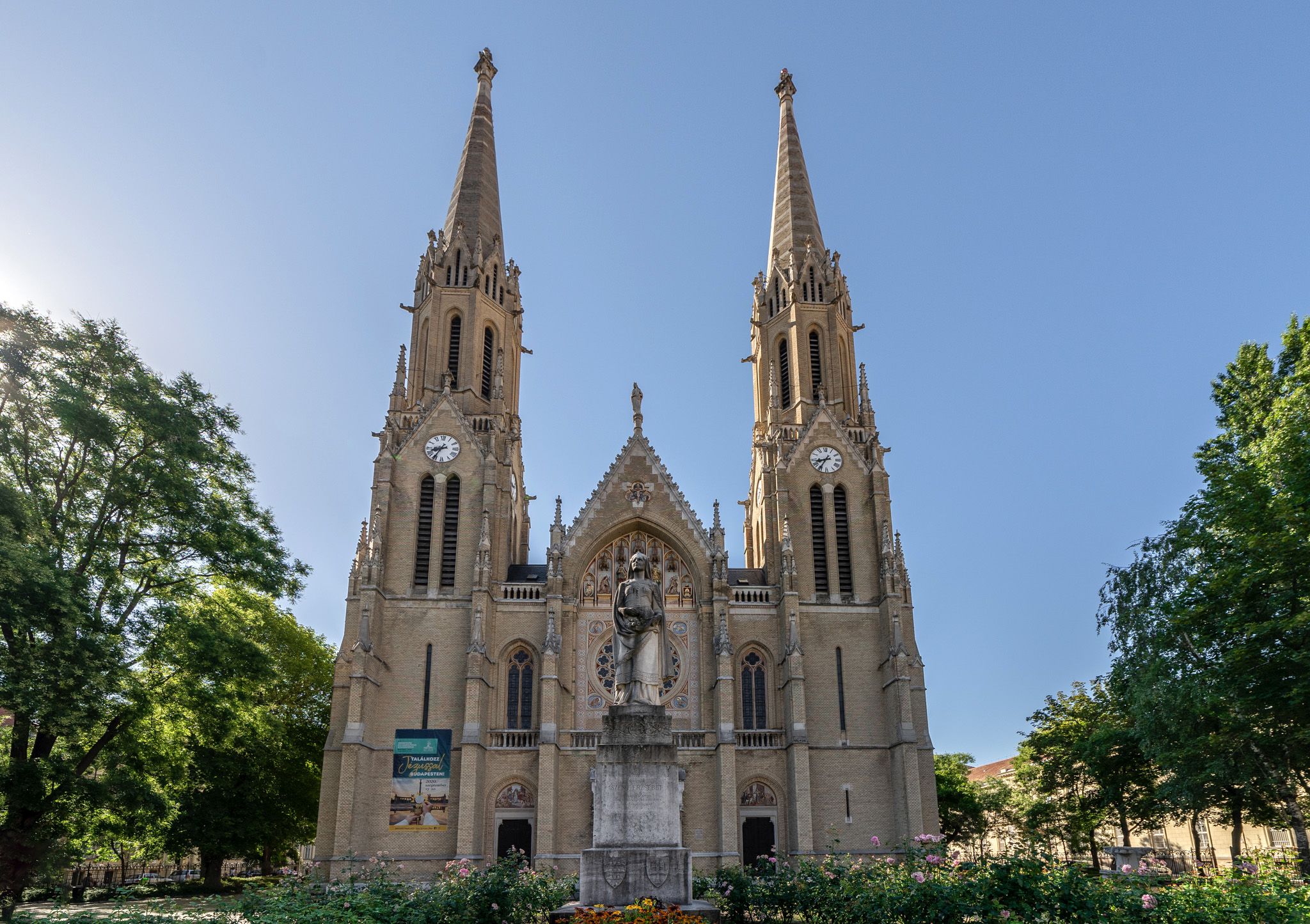
(Photo: Balázs Both/pestbuda.hu)
The statue of St. Elizabeth by József Damkó was erected in the square in front of the church in 1932, on the 700th anniversary of the saint's death. At the time, the square was called Szegényház Square and was renamed Rózsák Square ('Square of Roses'), referring to a miracle of St. Elizabeth, the patron saint of the poor. According to legend, Elizabeth carried bread for the poor hidden in her apron, and these turned into roses when her husband questioned her. In the interior of the church, roses and floral motifs appear in many places. And in the frame of the rose window, on the walls, ceiling and glass windows.
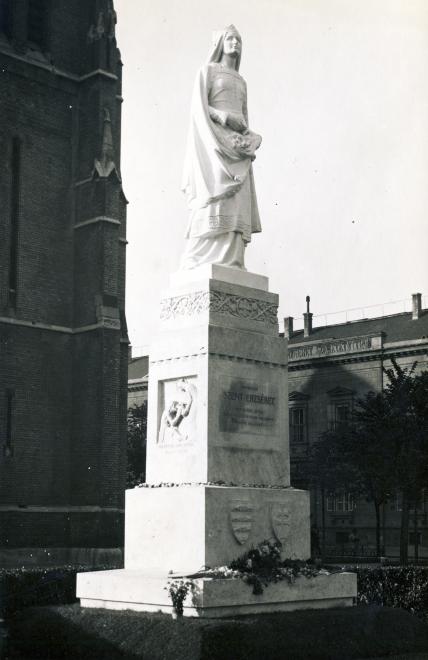
Statue of St. Elizabeth on Rózsák Square in front of the church in 1937 (Photo: Fortepan/No.: 118758)
On the pedestal of the statue, one of the reliefs depicts St. Elizabeth as she accepts the belt of the Franciscan order. On the other side, Elizabeth gives a poor man a drink. The inscription on the pedestal: "St. Elizabeth of Hungary, mother of the poor, protect the poorest of them all, our HUngarian home:"
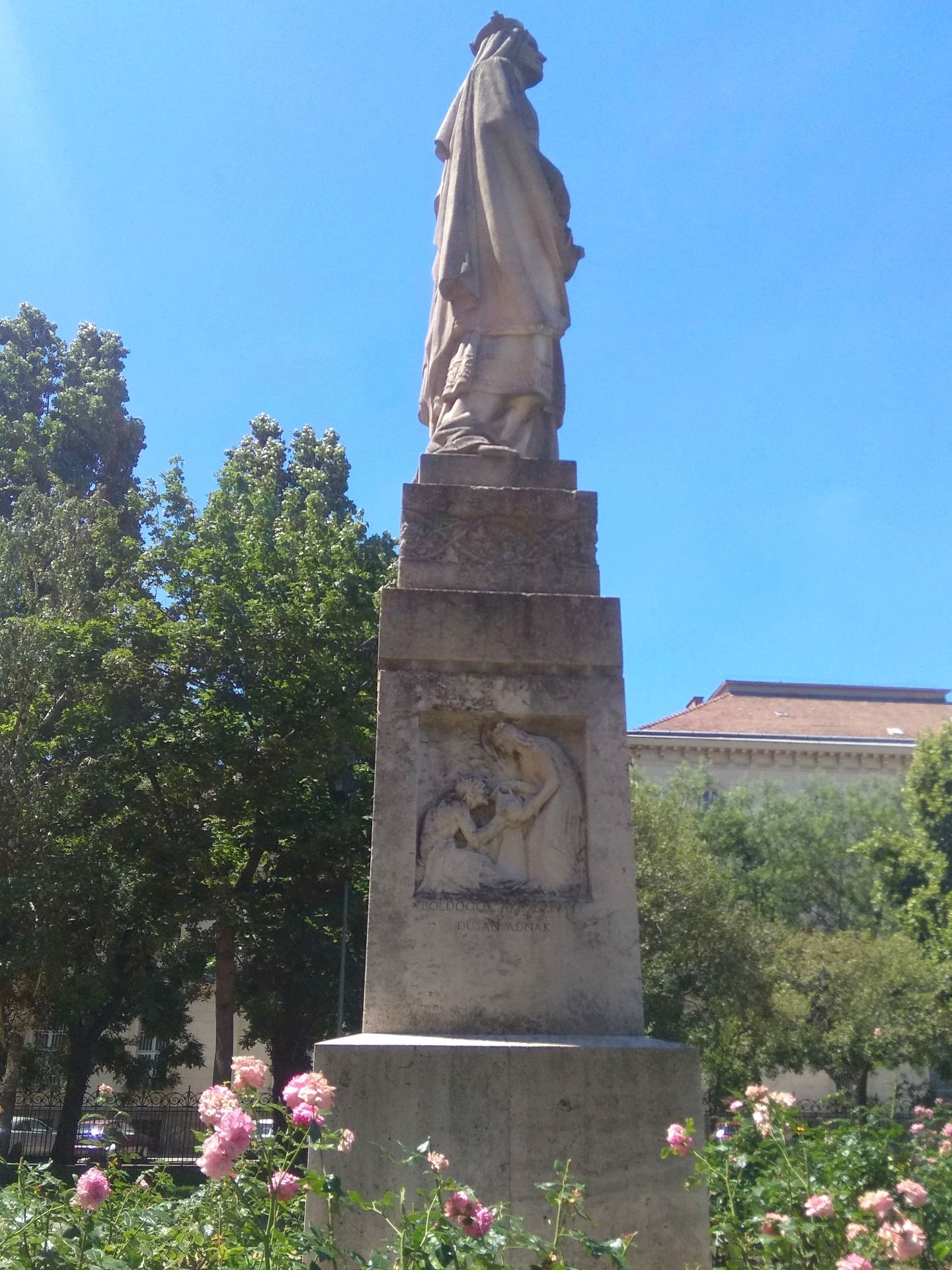
The statue of St. Elizabeth today (Photo: pestbuda.hu)
The imposing church evokes elements of early French Gothic architecture. The architect drew ideas from the solutions of the Košice Cathedral and the medieval church of St. Elizabeth in Marburg, which are connected to the cult of St. Elizabeth. The style of the building is neo-Gothic, and Steindl used the most modern technical solutions of the age.
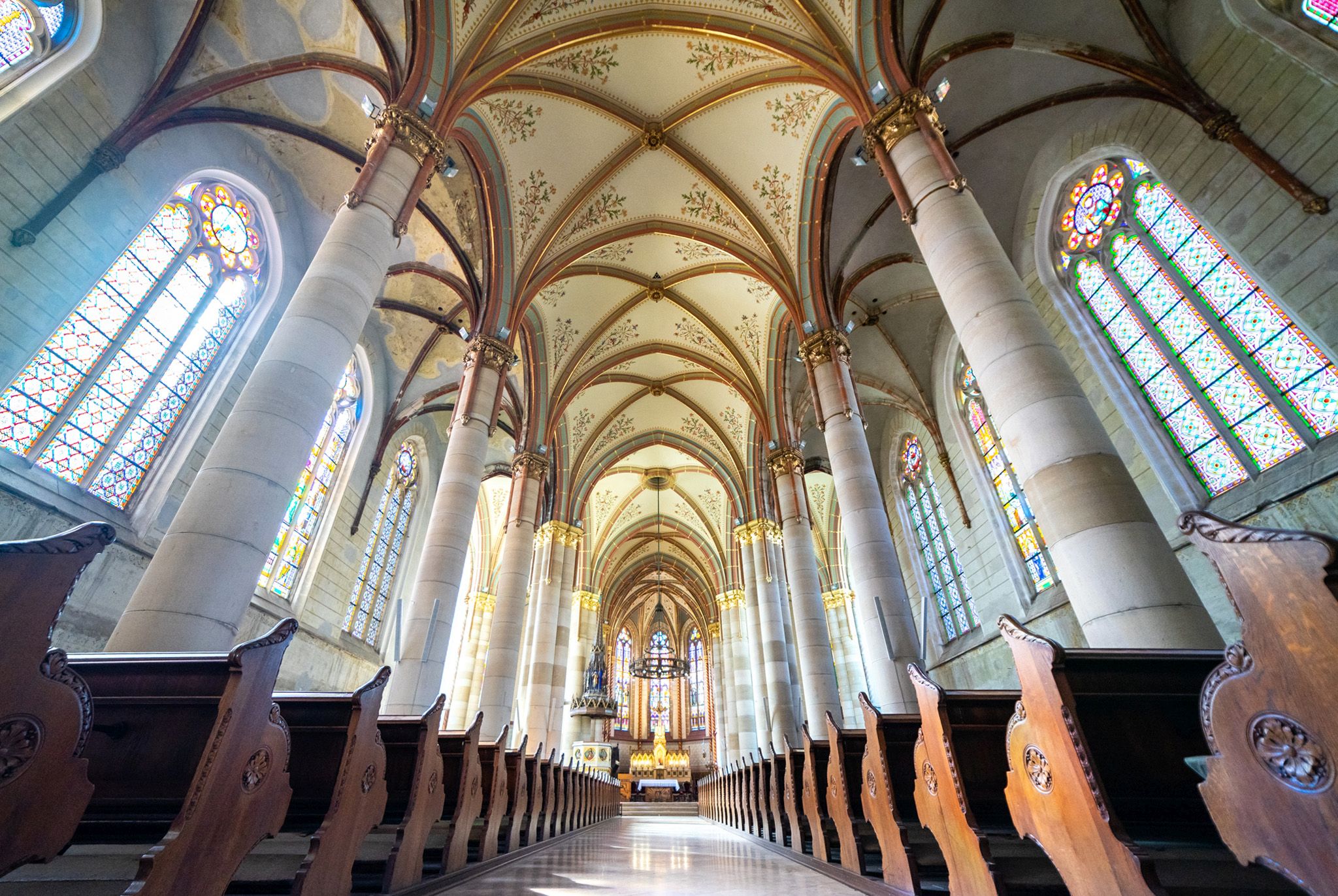 The nave of the neo-Gothic church (Photo: Balázs Both/pestbuda.hu)
The nave of the neo-Gothic church (Photo: Balázs Both/pestbuda.hu)
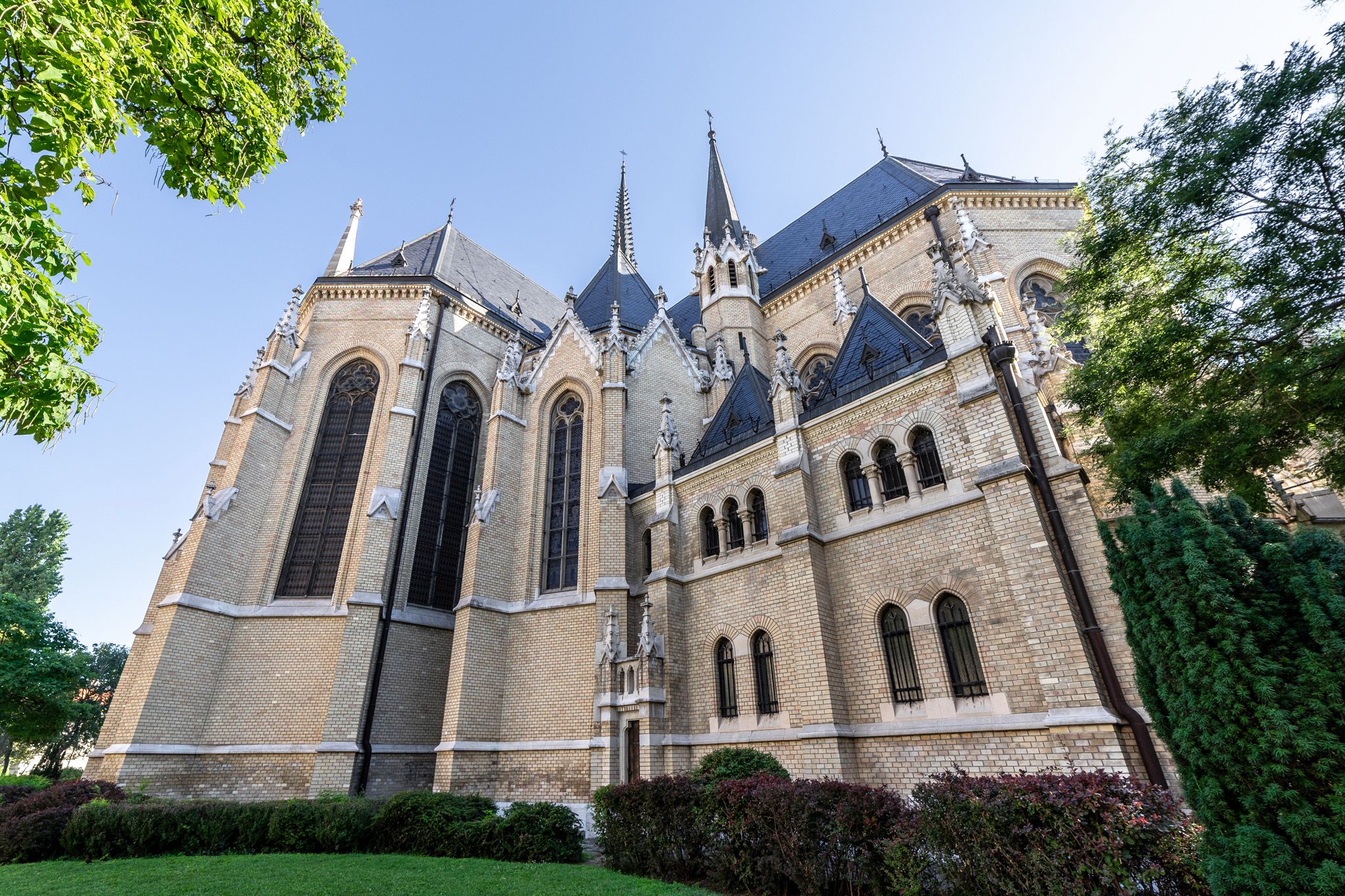
Side of the building facing the garden (Photo: Balázs Both/pestbuda.hu)
The construction of the church took place at the same time as the construction of the Parliament, Steindl worked largely with the same workers, so it is not surprising that we find similarities between the decorative elements and the models of the two buildings. The church is also called the sacral pair of the Parliament.
The building is a work of art in which the architect designed the external and internal structural design in its entirety, including the arrangement of the interior fixtures. The completely unified external and internal development of the church has survived to this day.
The most significant representatives of the architectural industry of the end of the century worked on the construction site – including Sándor Hauszmann, Adolf Götz, Miksa Róth, Miklós Köllő and Vilmos Zsolnay. Their work resulted in one of the most significant neo-Gothic churches in Budapest alongside Matthias Church in Buda.
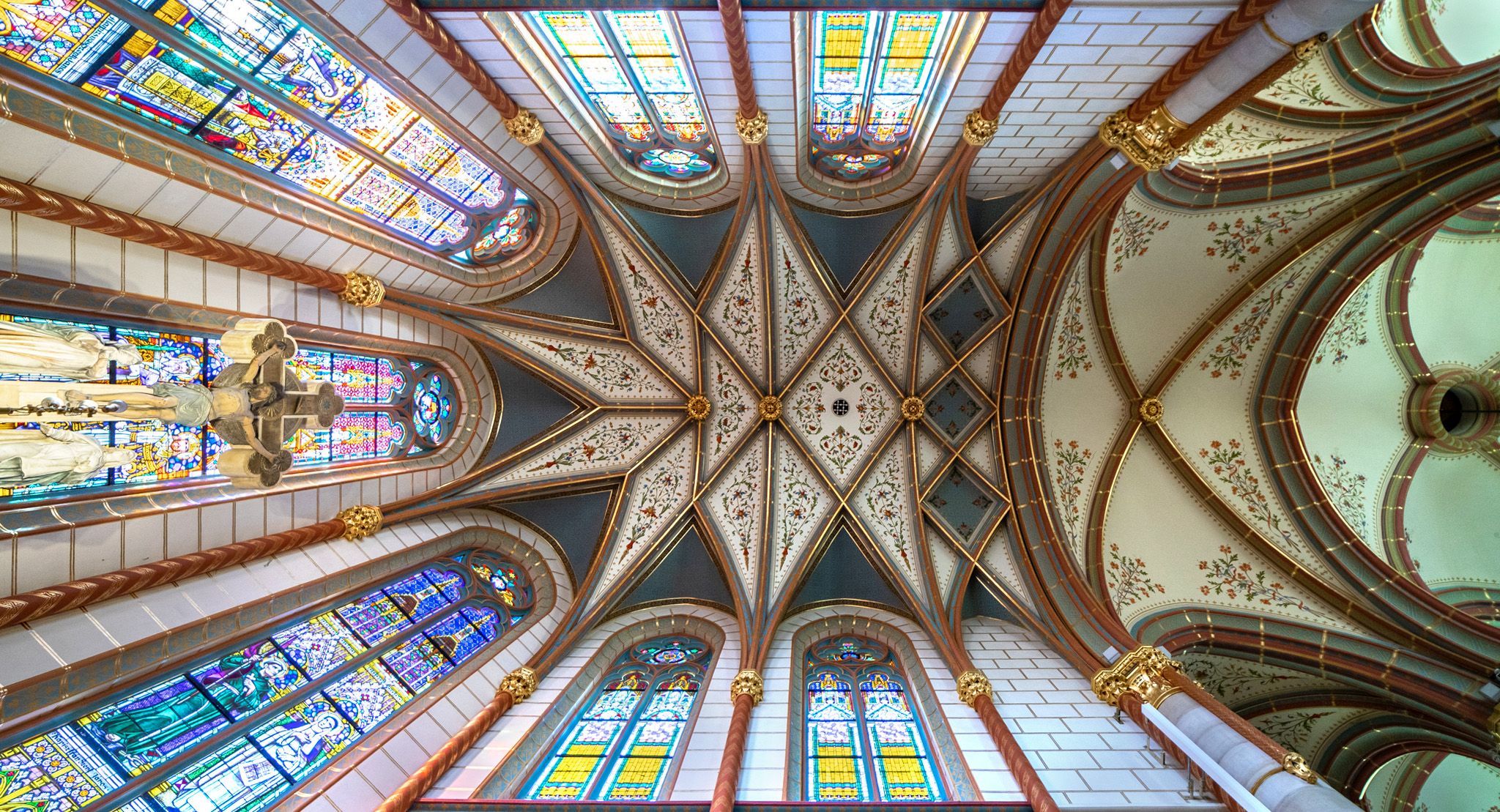
The building is a work of art in which the unity of external and internal design has been realised (Photo: Balázs Both/pestbuda.hu)
The two towers of the basilica-style (nave and two aisles) church are 76 meters high. The building is 21 meters wide and 62 meters long. The 1,800-square-metre church can accommodate 2,600 people.
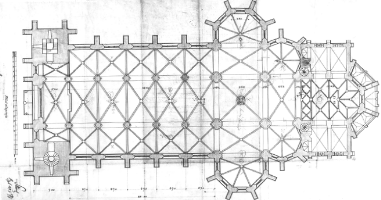
Floor plan of the church (Source: rozsaktere.uw.hu)
The reliefs above the main entrance and the two side entrances of the church are the works of sculptor György Kiss, who also made the statue of St. Elizabeth at the top of the gable. Above the main entrance is a Gothic rose window in a square ceramic frame. In the triangles between the square and the circle of the rose window, the symbols of the four evangelists are depicted in ceramic reliefs.
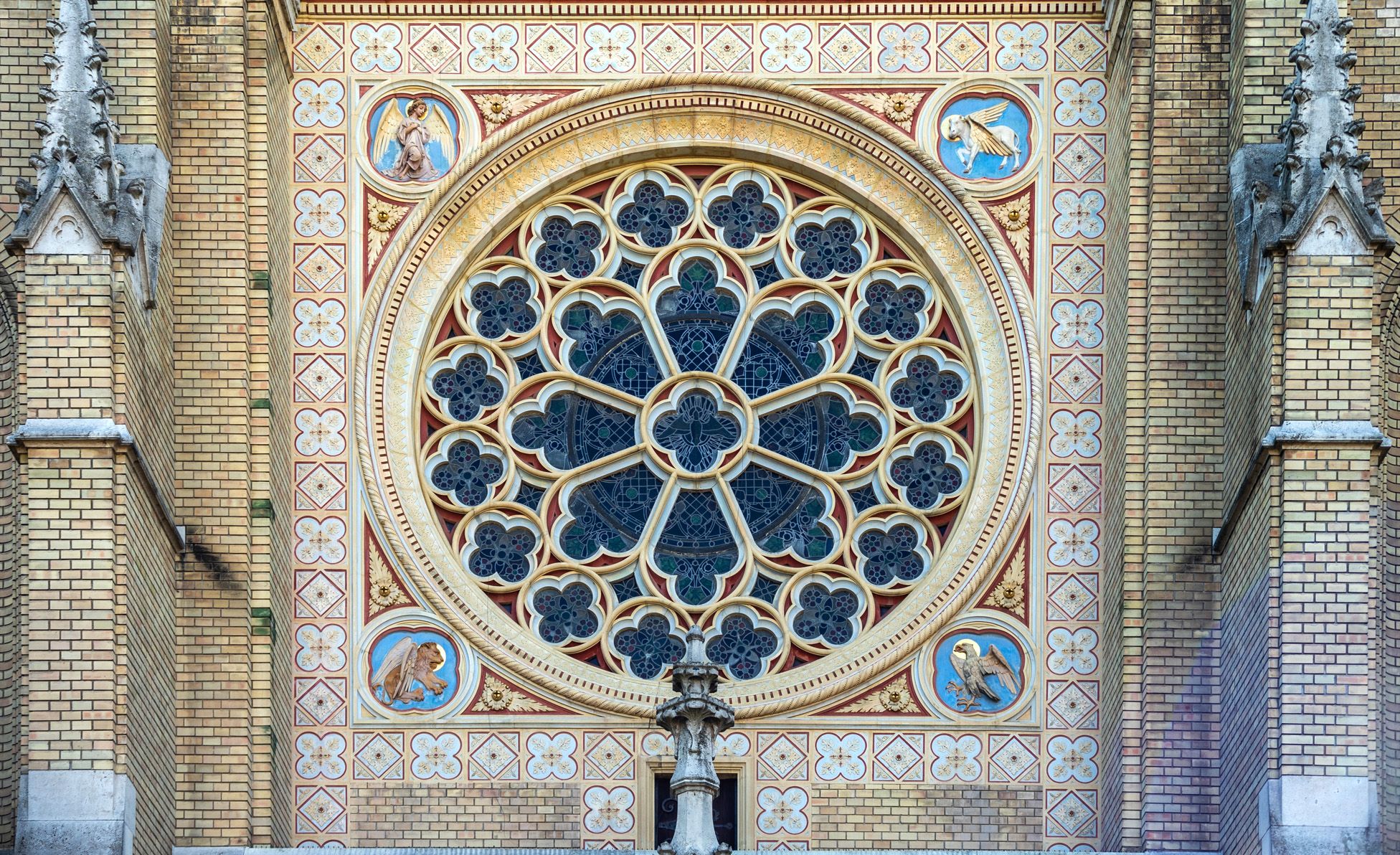
Gothic rose window above the main entrance with the four evangelists (Photo: Balázs Both/pestbuda.hu)
Above it, in the pointed arched field of the façade gable, the statues of Miklós Köllő can be seen: Saint Ladislaus, the Virgin Mary with the Baby Jesus and King Saint Stephen. Next to them, to the right and to the left, kneeling angels. The edges of the gallery are decorated with the unified coat of arms of the countries of the Hungarian Holy Crown and the coat of arms of Budapest.
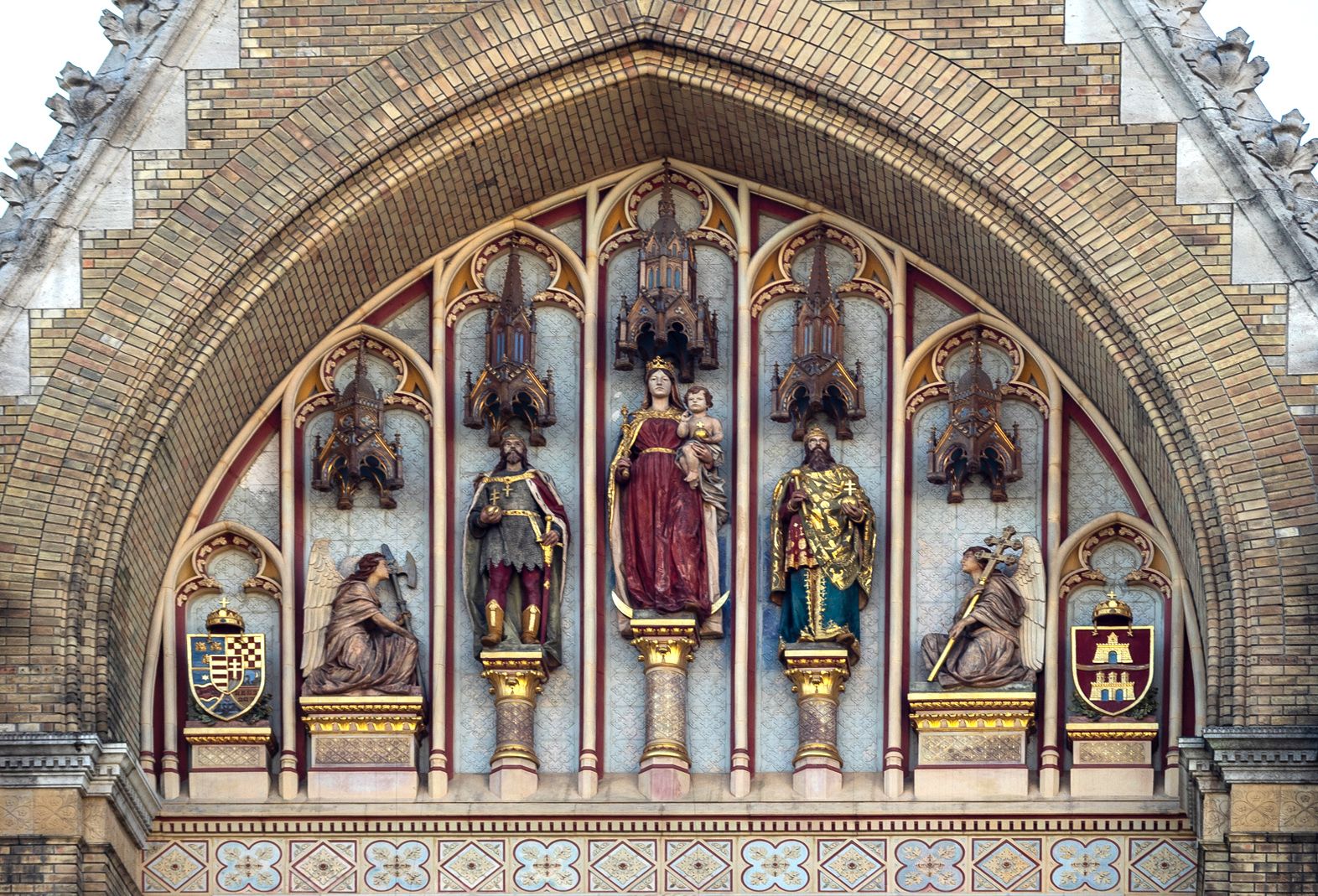
The statues decorating the facade, the coat of arms of the countries of the Holy Crown and Budapest can be seen on the sides (Photo: Balázs Both/pestbuda.hu)
The walls of the church were covered with bricks. Building elements, more exposed to the weather, were made of carved stone. The terracotta coverings were made in Vilmos Zsolnay's factory in Pécs, who, together with Imre Steindl, experimented with the best material for the purpose, the so-called Steindl paste, which later became known as pyrogranite.
Entering the church, a stunning sight greets the visitor. The light flows in through the stained glass windows, the harmony of the various decorative elements is stunning. The stained glass windows of the nave were made in Miksa Róth's workshop, most of which were destroyed in the Second World War. Reconstructions of the original windows can be seen in their place today. The only surviving glass window was in the sanctuary behind the crucifix.

The stained glass windows were reconstructed after the Second World War on the basis of the originals (Photo: Balázs Both/pestbuda.hu)
The nave is divided into six bays up to the transept. The floor plan is cross-shaped, there is another bay after the intersection of the nave and the transept, and a hexagonal sanctuary closes the church. Between the polygonal closure of the nave and the aisles, an octagonal stair tower was created, which also beautifies the architectural image of the church.
A huge organ from the workshop of Sándor Országh and his son was placed in the gallery in 1901. The high-value, 3-manual, 47-register part of the organ was covered with debris from the church’s renovation until two years ago, and then its renovation began. Currently, 54 of the 1,200 whistles can sound.
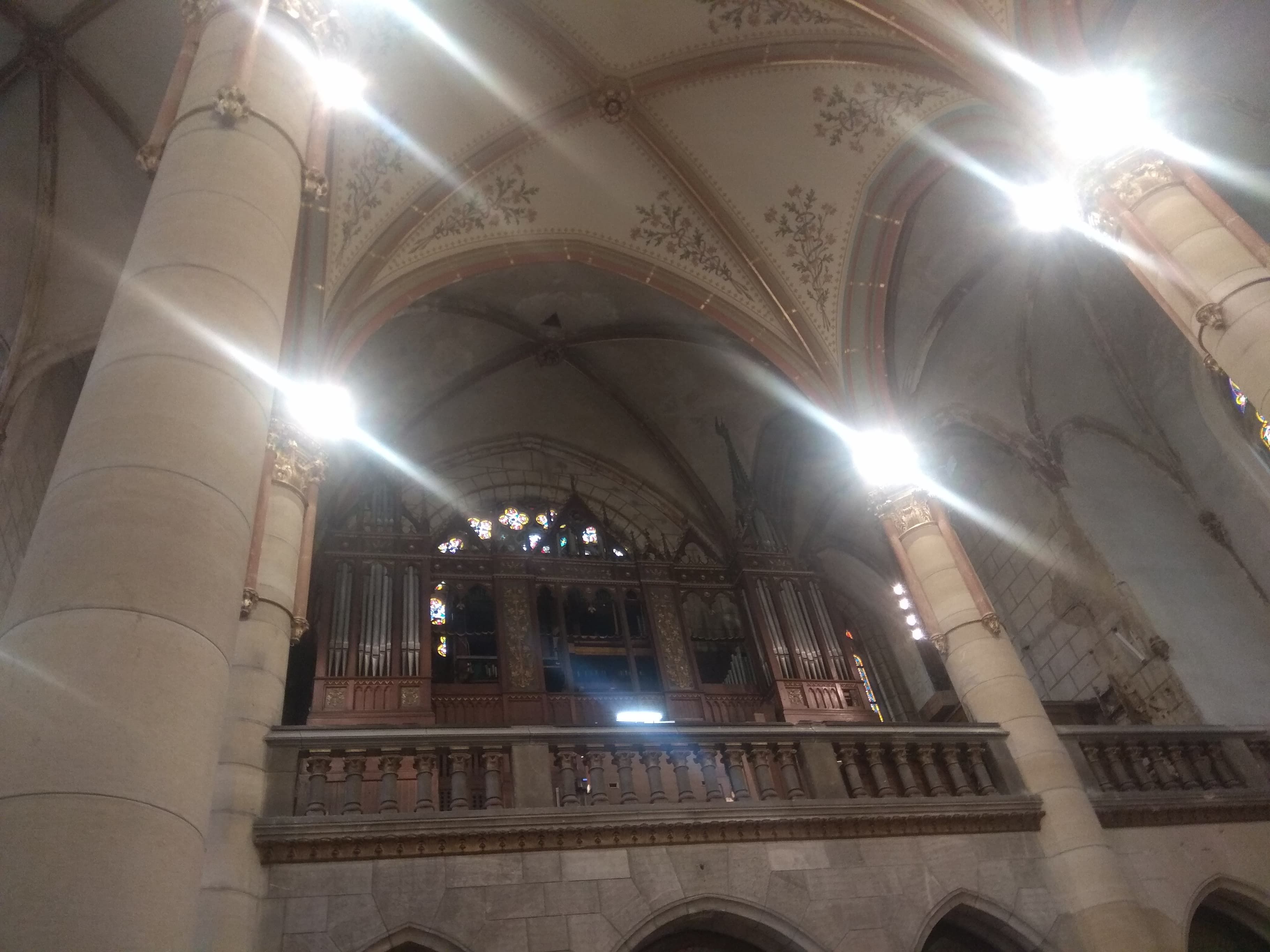 The 119-year-old organ in the gallery (Photo: pestbuda.hu)
The 119-year-old organ in the gallery (Photo: pestbuda.hu)
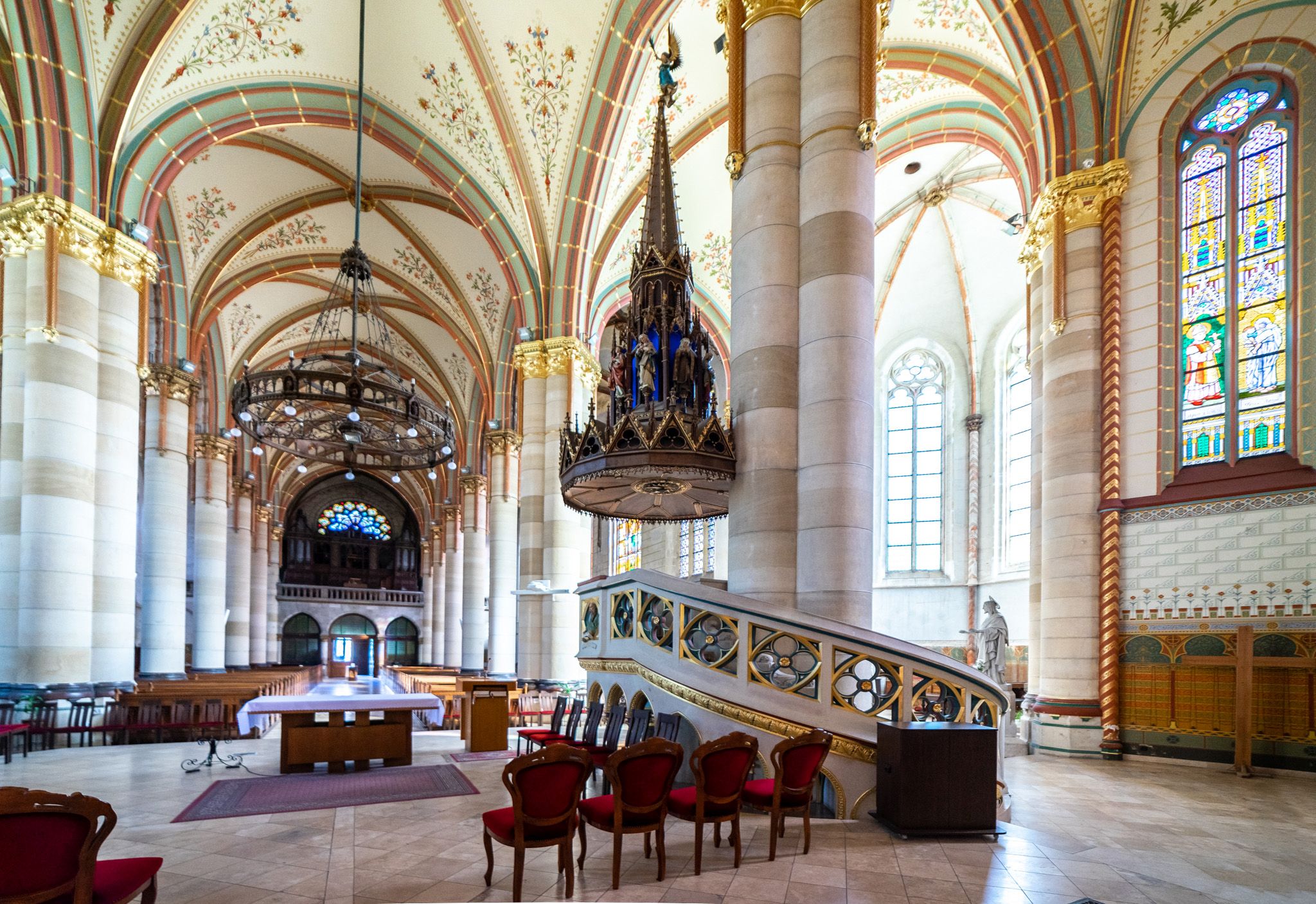
To the right is the pulpit, the altar in the centre (Photo: Balázs Both/pestbuda.hu)
An altar rail separates the nave from the octagonal sanctuary. The main altar was made of marble, onyx and bronze in the stonemason's workshop of Sándor Hauszmann. The gilded sanctuary with sculptures and reliefs depicting Hungarian saints and beatified people is the work of sculptor Lajos Lantay.
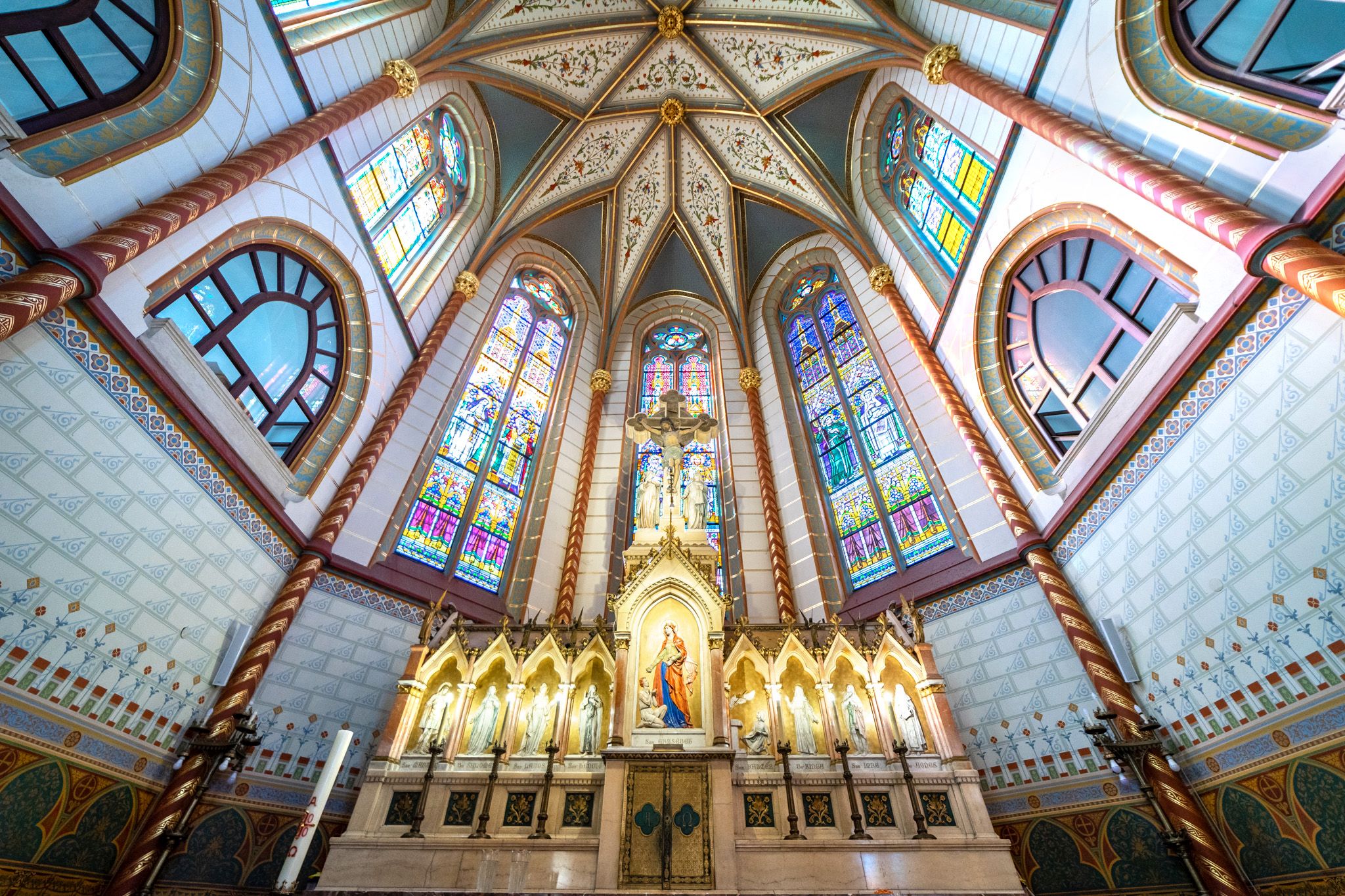 The sanctuary (Photo: Balázs Both/pestbuda.hu)
The sanctuary (Photo: Balázs Both/pestbuda.hu)

The reliefs of the gilded sanctuary depict Hungarian saints (Photo: Balázs Both/pestbuda.hu)
Craftsmen living in the district also took part in the construction of the church, such as the four-poster canopy throne chairs used in the sanctuary and the pews were made in Károly Lingl' s furniture factory in Erzsébetváros.
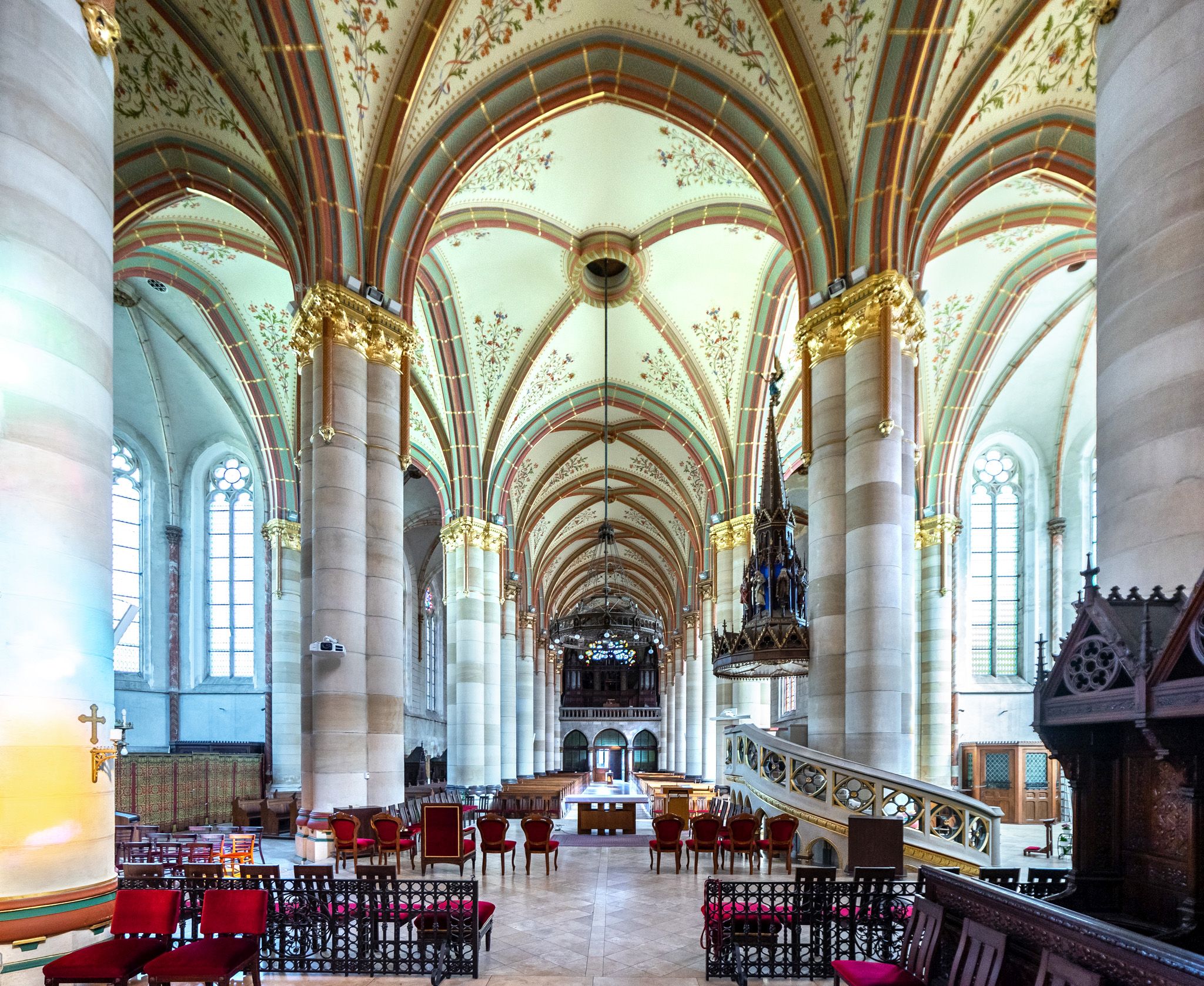
The sanctuary (Photo: Balázs Both/pestbuda.hu)
The glass windows behind the altar depict the following saints: St. Margaret, St. John the Almsgiver, St. Adalbert, St. Stephen, St. John of Capistrano, Blessed Gertrude. Two sacristies open from the sanctuary, above which the oratorios are located, with an opening into the sanctuary.
The gilded wooden altars in the transept were made by Mór Holtzl, the altarpieces on them were painted with biblical scenes and saints by Gyula Aggházy (Archangel Gabriel on the left) and Lóránt Zubriczky (St. Anthony of Padua on the right).
The pulpit with the relief of the four evangelists came from the workshop of Sándor Hauszmann. Bronze candelabras stand between the pews and next to the columns. The vault of the nave is supported by two rows of ornate columns, the ornamental painting decorated with neo-Gothic motifs by Adolf Götz.
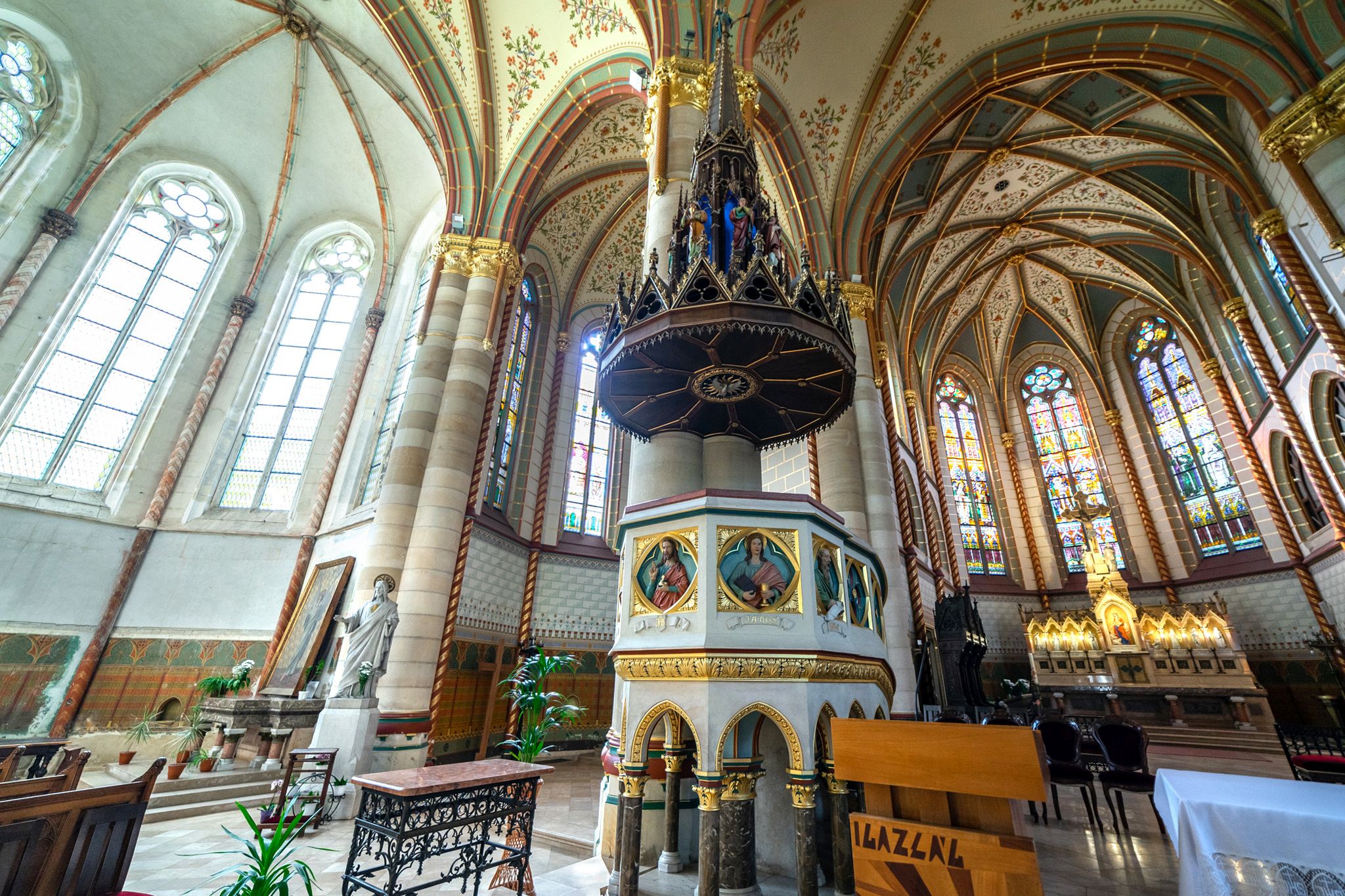
The side of the pulpit is decorated with reliefs of the four evangelists (Photo: Balázs Both/pestbuda.hu)
The church was badly damaged in World War II, the temporary restoration of the damage was completed by 1949, but the church building would have required a complete renovation. Lacking such, the building was in deplorable technical condition by the 1980s. In 1995, the church building was declared a nationally protected monument, and the following year the surroundings of the church also received cityscape protection.
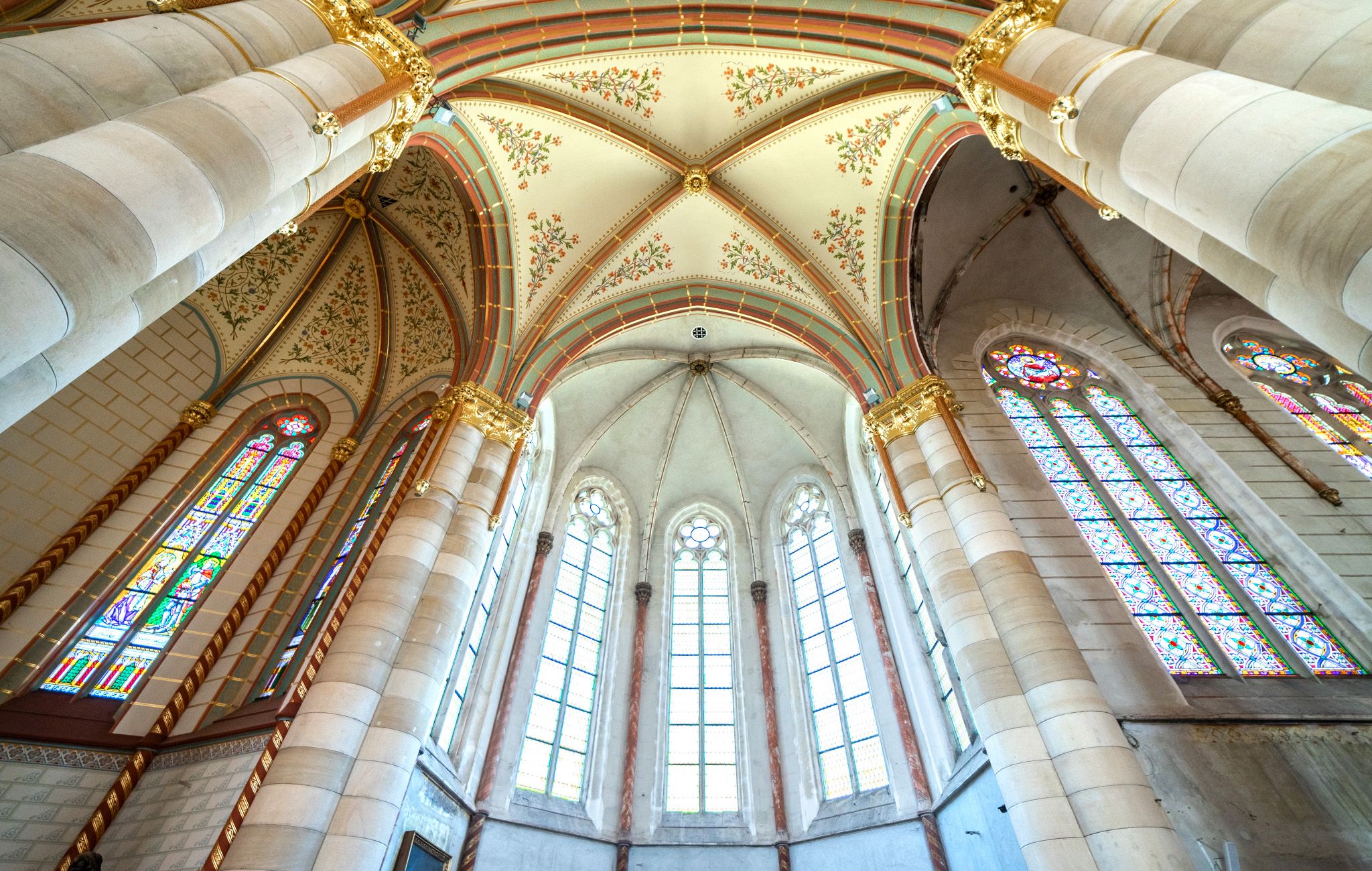
Columns with ornate capitals, ornamental painting decorated with neo-Gothic motifs (Photo: Balázs Both/pestbuda.hu)
Renovation work on the building, which was in a tragic condition, began in 1995. After repairs to the roof structure and exterior façade, four of the ship’s large coloured glass windows were reconstructed. The former boiler room under the sanctuary was converted into a columbarium, and the complete renovation of the north tower was completed in 1997.
Wall-saving work on the interior painting of the church began in 2000 when restorer-painter Marianne Kemény created plan boards for the entire interior painting. The artistic director of the restoration works reconstructed the former decorations based on the patterns and fragments found and developed a restoration plan.
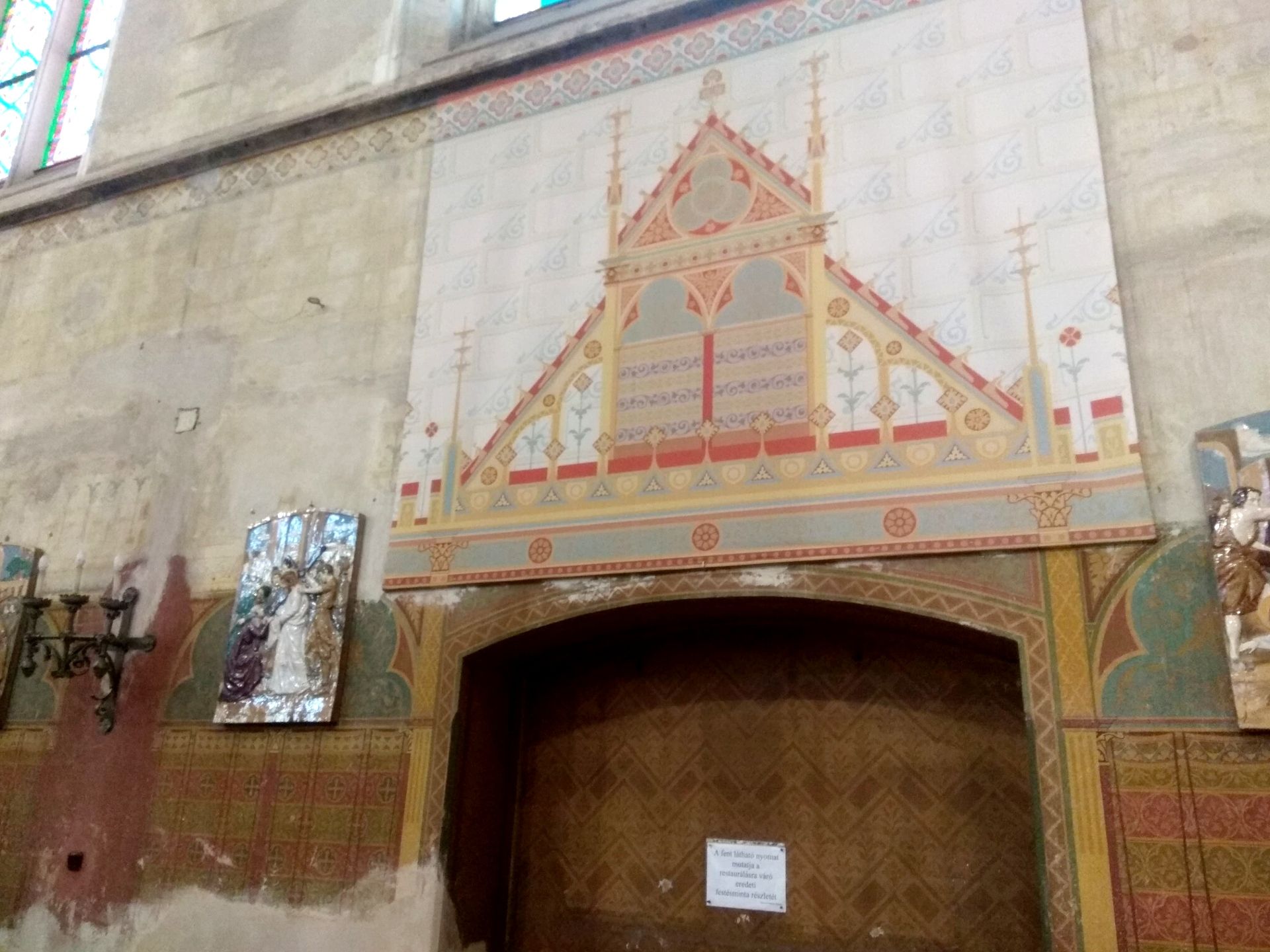
Based on the found patterns and fragments, the former decorations were reconstructed, the restoration works on the wall of the main nave have not been completed yet (Photo: pestbuda.hu)
First, the sanctuary, then the side altars, later the wall paintings of the three vaulted sections of the transept were restored, and then the ceiling of the nave. The restoration of the ceilings of the aisles and the walls of the main nave has not yet been completed, and renovation work is currently on hold. The recurring motif of the ornaments is the rose, which is an attribute of St. Elizabeth of Hungary.
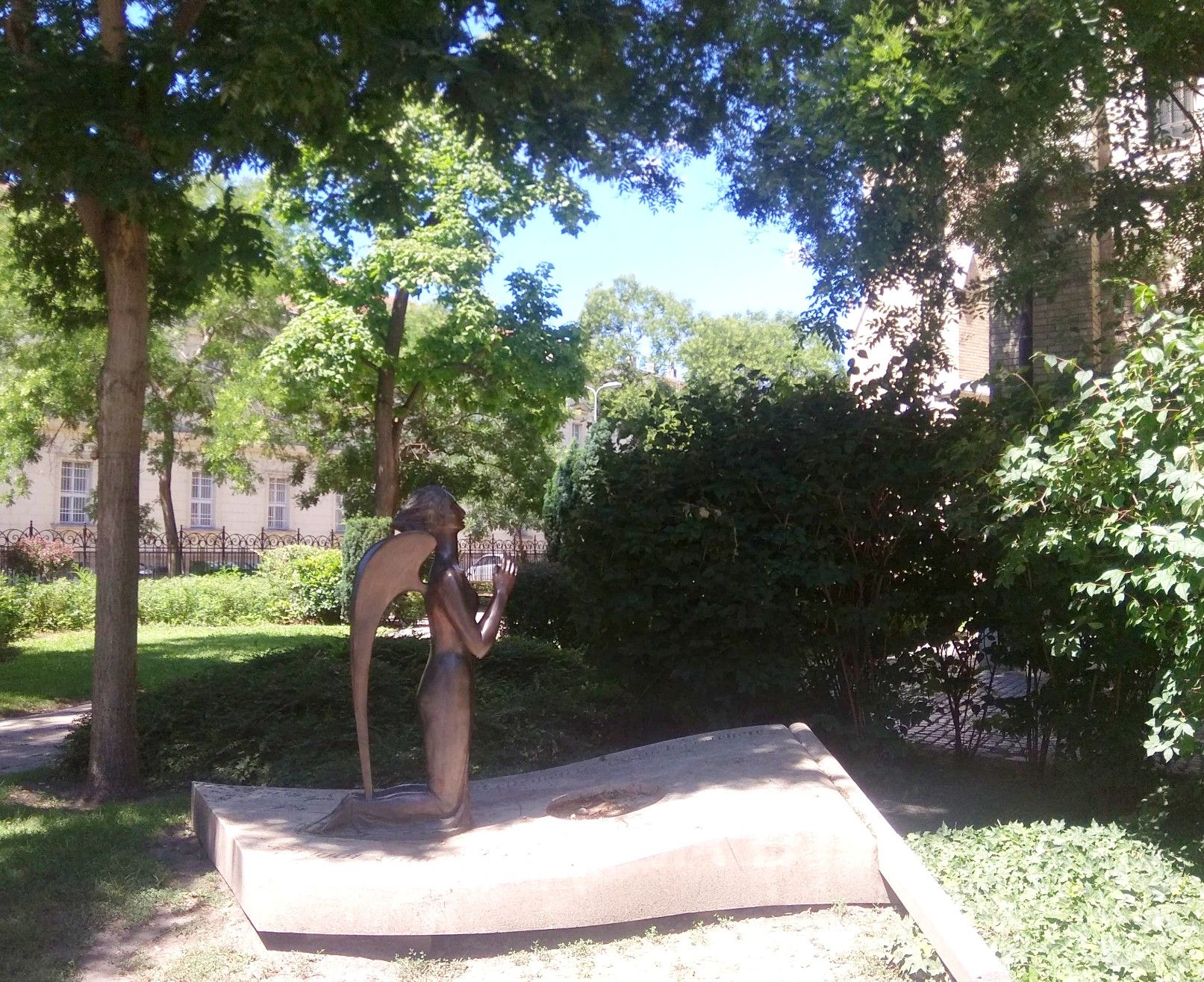
In the garden of the church, behind the sanctuary, there is a statue of a Kneeling Angel, made in 2007. The work of sculptor Mária R. Törley and architect Aladár Végh shows an angel kneeling on a flag from which the Rákosi coat of arms has been cut out, engraved on the flag the lines of Sándor Márai's poem written for Christmas 1956: "Angel, bring down the word from the skies:New life from blood will always arise." (Photo: pestbuda .hu)
It is worth walking around the church, admiring the building, the rose garden from all sides, and then relaxing on the benches in the garden under shady trees.

The garden in front of the church facing Dohány Street (Photo: pestbuda.hu)
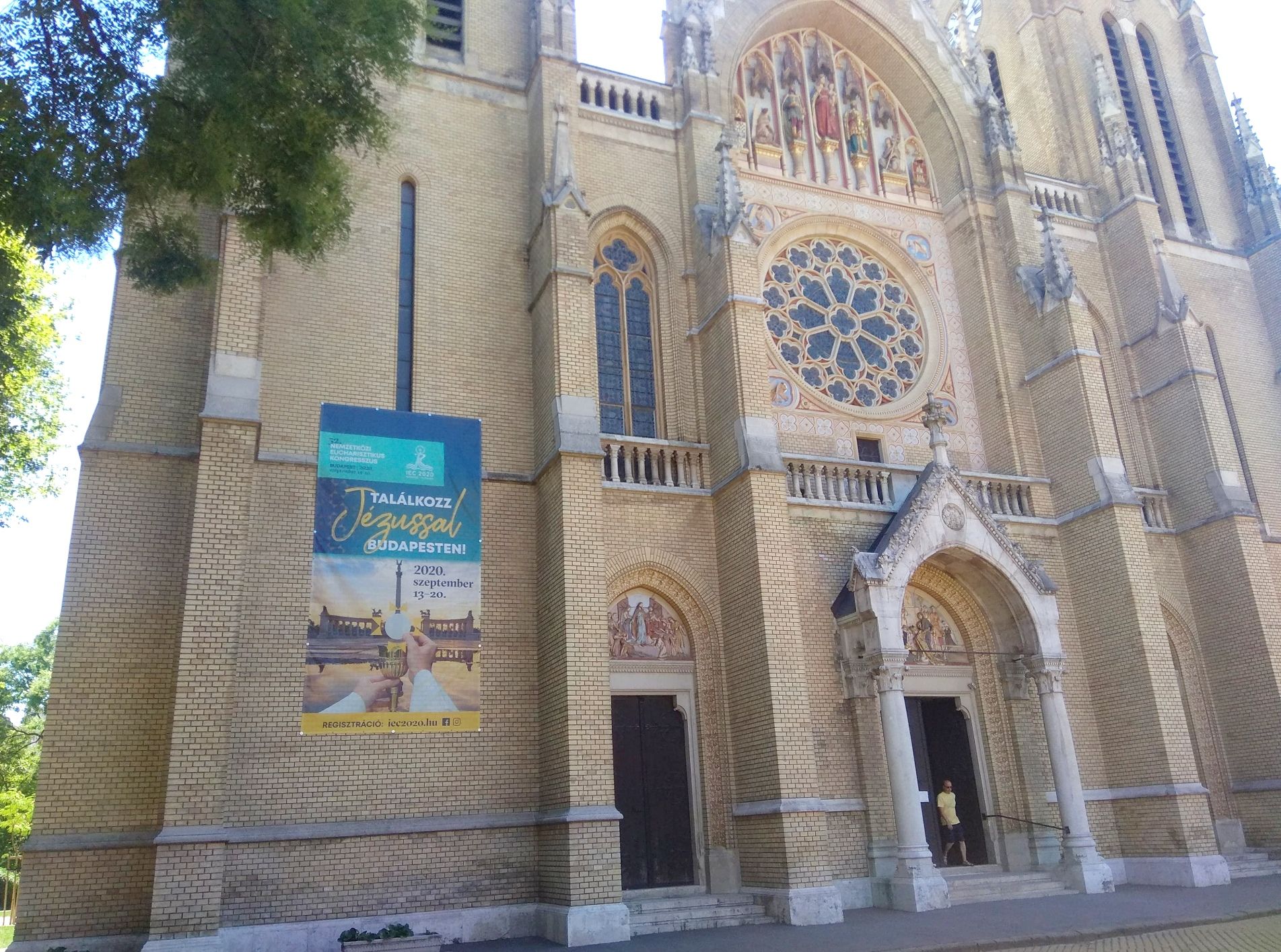
The church will be one of the venues of the International Eucharistic Congress in 2021 (Photo: Balázs Both/pestbuda.hu)
Cover photo: St. Elizabeth's Church on Rózsák Square (Photo: Balázs Both/pestbuda.hu)

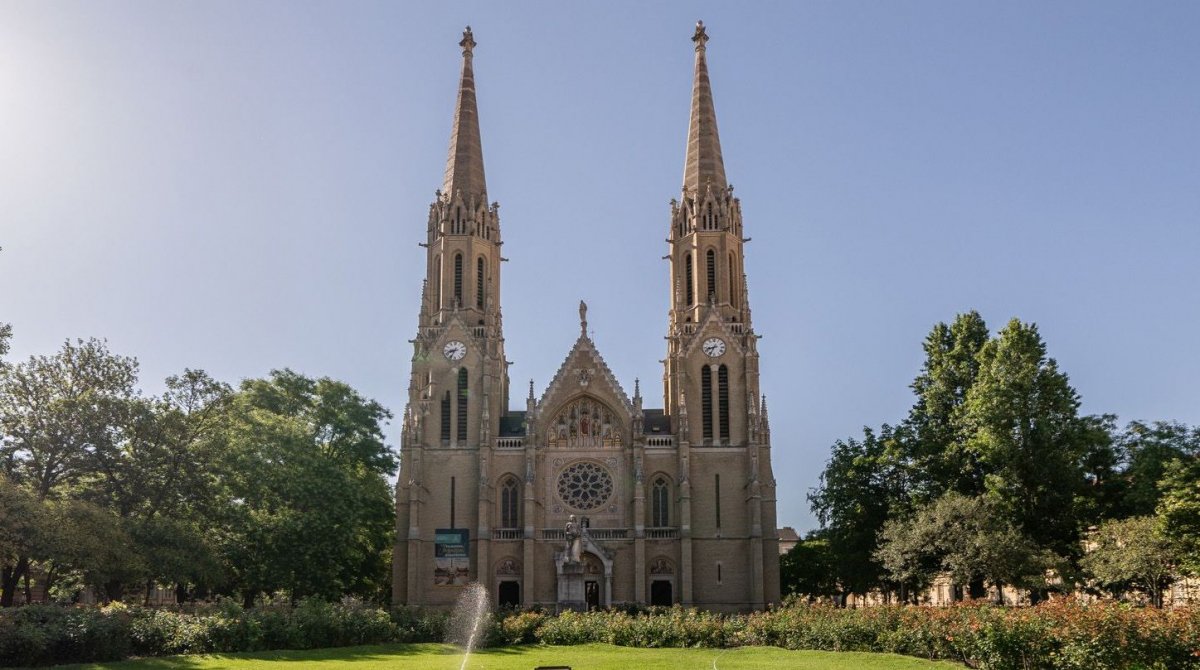

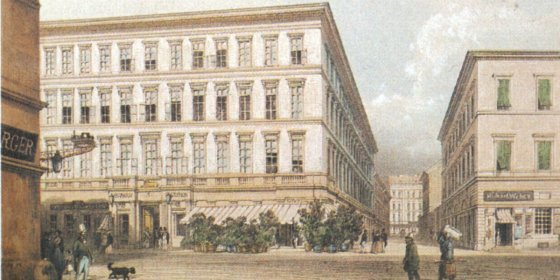
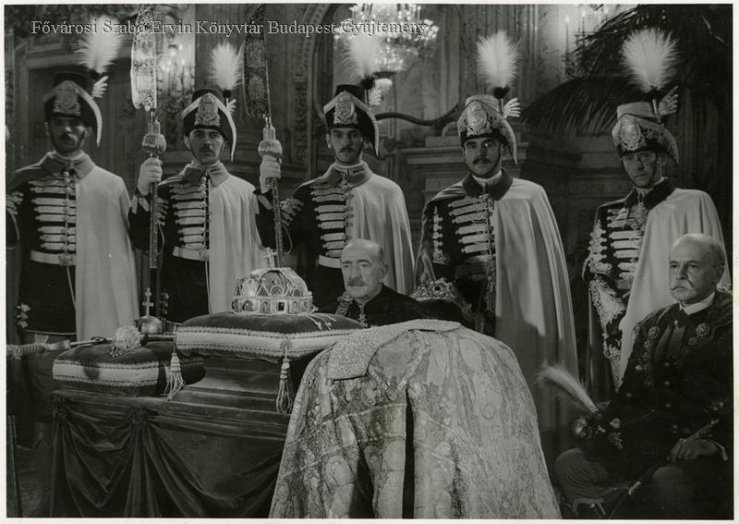
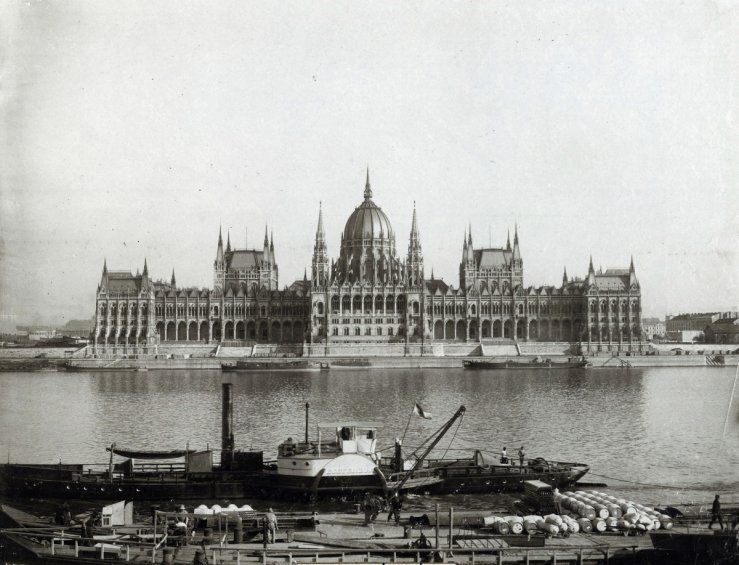

































Hozzászólások
Log in or register to comment!
Login Registration